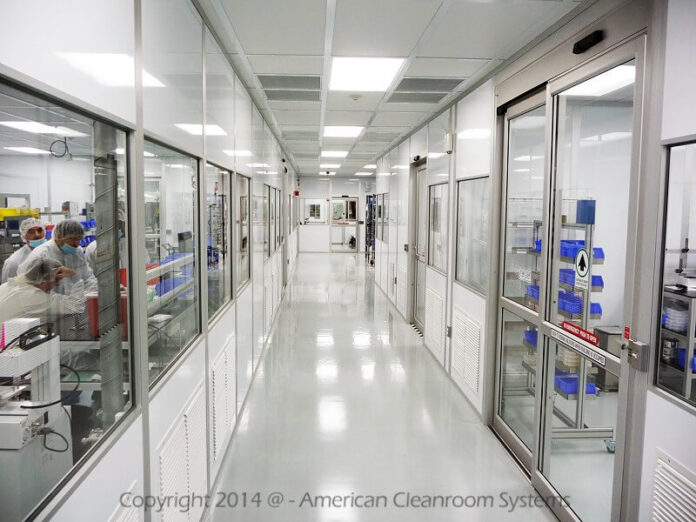In pharmaceutical manufacturing, precision, safety, and product integrity are paramount. Ensuring the highest quality standards throughout the production process is a regulatory necessity and essential for safeguarding patient health and well-being. Controlling static electricity emerges as a critical concern among the many challenges this industry faces.
Static electricity poses inherent risks in pharmaceutical manufacturing setups. As per Airline Hydraulics, findings from the ESD Association reveal that static electricity can lead to significant losses, with the average loss ranging up to 33%. Moreover, notable companies have reported that approximately 25% of all identified electronic part failures are attributed to Electrostatic Discharge (ESD).
These alarming statistics underscore the importance of addressing static-related risks and implementing effective measures to prevent ESD incidents in various industries, including pharma.
Pharmaceutical manufacturers are turning to static dissipative cleanrooms to address this pressing issue. These specialized environments mitigate static-related risks, bolstering product quality and operator safety. In this article, we delve into the indispensable role of static dissipative cleanrooms in pharmaceutical manufacturing.
Static Electricity in Pharmaceutical Manufacturing: The Challenges
In pharmaceutical manufacturing, static electricity is an ever-present concern that demands attention. Static electricity is a natural phenomenon that occurs when two surfaces come into contact and then separate, resulting in an imbalance of electric charges. In cleanroom environments, where precision and product integrity are paramount, static can pose significant risks.
Static electricity can lead to several challenges in pharmaceutical manufacturing processes. One of the primary concerns is ESD, which occurs when the accumulated electrical charge on a surface is suddenly released.
ESD events can cause damage to sensitive electronic components, affecting product quality and reliability. Additionally, static can attract and hold particulate matter, posing a threat to the cleanliness of the manufacturing environment.
To mitigate these risks, pharmaceutical manufacturers must prioritize static control measures within their cleanroom setups. Implementing static dissipative cleanrooms is vital in providing a controlled environment that minimizes static-related incidents.
The Need for Static Control in Cleanrooms
Cleanrooms serve as critical environments for pharmaceutical manufacturing, where even the slightest contamination or disruption can compromise product quality and patient safety. In these controlled spaces, static electricity poses a significant threat that cannot be overlooked.
ESD incidents in cleanrooms can lead to costly consequences, including damaged electronic components and compromised product integrity. Moreover, the attraction and retention of airborne particles by static charges can disrupt the sterile conditions necessary for pharmaceutical manufacturing.
To maintain the highest cleanliness and product reliability standards, pharmaceutical manufacturers must prioritize static control in their cleanroom facilities. Static dissipative cleanrooms are specifically designed to minimize electrostatic risks by providing a controlled environment with materials that effectively dissipate static charges.
In addition, static dissipative cleanrooms also require monitoring and maintaining particle levels as an additional essential aspect to measure their performance.
Cleanroom particle counters are indispensable tools used to assess and validate the cleanliness of the environment. These instruments measure the concentration of airborne particles of different sizes and help ensure that the cleanroom meets the required cleanliness standards.
According to American Cleanroom Systems, as pharmaceutical and medical device cleanrooms achieve ISO-5 and better standards, operators increasingly focus on super small particles measuring 0.3 microns. These particles tend to adhere to surfaces due to static electricity, making them challenging to remove.
Consequently, the significance of cleanroom particle counters becomes even more pronounced in such high-precision setups, enabling operators to effectively monitor and control particle contamination.
Features and Benefits of Static Dissipative Cleanrooms
Static dissipative cleanrooms offer a range of specialized features crucial for maintaining a controlled environment in pharmaceutical manufacturing. These cleanrooms are designed with materials and equipment that effectively dissipate static charges, mitigating the risks posed by ESD and ensuring product integrity and operator safety.
– Electrostatic Protection: Static dissipative cleanrooms are engineered to prevent the accumulation of static electricity on surfaces and equipment. By providing a controlled environment with static-dissipative materials, these cleanrooms significantly reduce the potential for ESD incidents that could damage sensitive electronic components.
– Contaminant Control: Static dissipative cleanrooms not only control static buildup but also minimize the attraction and retention of airborne particles. This feature is especially critical in high-precision setups where even tiny particles can adversely affect product quality.
– Enhanced Product Quality: Implementing static control measures in cleanrooms improves product quality and reliability. Pharmaceutical manufacturers can ensure consistent and superior product quality by minimizing the risks associated with static electricity.
– Operator Safety: Static dissipative cleanrooms prioritize the safety of personnel working within the controlled environment. By neutralizing static charges, these cleanrooms reduce the risk of electrostatic shocks to operators, creating a safe working environment.
– Regulatory Compliance: Pharmaceutical manufacturing is subject to strict regulations and quality standards. Static dissipative cleanrooms help pharmaceutical companies comply with industry regulations and demonstrate a product safety and quality commitment.
According to PharmOut, in the context of pharmaceuticals, cleanrooms refer to those rooms that adhere to the Good Manufacturing Practice (GMP) requirements outlined in the sterile code of GMP. These requirements are defined in Annex 1 of both the EU and PIC/S Guides to GMP, as well as other standards and guidance mandated by local health authorities.
Cleanrooms in pharmaceutical settings play a crucial role in ensuring the integrity and safety of sterile products by meeting stringent regulatory standards and maintaining controlled environments.
Applications in Pharmaceutical Manufacturing
Static dissipative cleanrooms find extensive applications across various critical processes in pharmaceutical manufacturing. These specialized cleanrooms are vital in ensuring the highest levels of product quality, safety, and compliance with regulatory standards.
– Sterile Manufacturing: Static dissipative cleanrooms are utilized in aseptic filling and compounding processes, where even the tiniest particle or static charge can compromise the sterility of medications.
– Precision Assembly and Packaging: Pharmaceutical products often involve intricate assembly and packaging processes. Static dissipative cleanrooms are indispensable in these operations to safeguard delicate electronic components and sensitive pharmaceutical materials from ESD damage.
– Drug Research and Development: Cleanrooms with static control measures are essential in pharmaceutical research and development labs, where precision and consistency are critical. By providing a static-free environment, these cleanrooms protect valuable research samples and ensure accurate data collection.
– Quality Control and Testing: Pharmaceutical manufacturers require contamination-free environments to accurately assess product quality during quality control and testing phases. Static dissipative cleanrooms enable precise testing without interference from static-related issues.
– Biotechnology and Vaccine Production: In biotechnology and vaccine production, maintaining sterile and static-free conditions is vital to ensure the safety and efficacy of biological products. Static dissipative cleanrooms play a central role in these processes to minimize risks and uphold product integrity.
Cleanroom Standards and Certifications
In the pharmaceutical manufacturing industry, cleanroom standards and certifications are pivotal in ensuring the integrity of controlled environments. These standards provide comprehensive guidelines for designing, constructing, operating, and maintaining cleanrooms to minimize contamination risks and maintain stringent product quality.
One of the prominent cleanroom standards utilized in pharmaceutical manufacturing is the classification of cleanrooms based on the concentration of airborne particles. This classification is often established by the International Organization for Standardization (ISO) in ISO 14644-1.
The ISO standard ensures a consistent approach to cleanroom classification worldwide, enabling pharmaceutical manufacturers to meet international requirements.
Certifications further validate the effectiveness of cleanroom facilities. Pharmaceutical manufacturers may seek certifications from reputable organizations that assess cleanroom compliance with relevant standards and industry best practices. These certifications prove the cleanroom’s efficacy and commitment to product safety and quality.
By adhering to recognized cleanroom standards and obtaining relevant certifications, pharmaceutical manufacturers can demonstrate their dedication to maintaining controlled environments and upholding regulatory standards.
Maintenance and Validation of Static Dissipative Cleanrooms
Periodic maintenance involves inspecting and testing cleanroom equipment, including de-ionizers and other static control measures, to ensure proper functioning.
Validation processes are conducted to verify that the cleanroom meets the required standards and performance criteria. It involves performing routine environmental monitoring and particle counting to assess the cleanroom’s cleanliness and particle levels.
Pharmaceutical manufacturers can confidently rely on these critical environments to prevent static-related risks, maintain product integrity, and ensure adherence to regulatory requirements by diligently maintaining and validating static dissipative cleanrooms.
Conclusion
Static dissipative cleanrooms play a vital role in pharmaceutical manufacturing by controlling static electricity, minimizing contamination risks, and ensuring product quality. These specialized environments are essential in safeguarding the integrity of sensitive pharmaceutical products and upholding industry standards.
Pharmaceutical manufacturers can maintain a controlled and safe environment by prioritizing static control measures and adhering to cleanroom standards, delivering reliable medications to patients worldwide.
It takes a unique sort of person to thrive in the challenging world of biotech entrepreneurship. Equipped with the abovementioned qualities, entrepreneurs can navigate the intricacies of the biotech landscape and lead the way in bringing transformative solutions to many of the world’s problems.
Read Also
- Optimizing CT Protocols: The Hidden Key to Efficiency and Cost Savings in RadiologyIntroduction: Why CT Protocol Optimization Matters Computed Tomography (CT) is a cornerstone of modern diagnostic imaging, providing critical information across nearly every medical specialty. However, maximizing the value of CT — both clinically and financially — requires more than just advanced hardware. The real secret lies in the optimization of CT protocols. When CT protocols… Read more: Optimizing CT Protocols: The Hidden Key to Efficiency and Cost Savings in Radiology
- The Role of Carbide Burs in Modern Dental ProceduresAs a result of this procedures need to be well coordinated and to this end, precision tools are used by dental practitioners. Among the most essential tools in a dentist’s arsenal are carbide burs, which have revolutionized various aspects of dental work. Today’s dentistry cannot work without these tools as they are both strong, sharp,… Read more: The Role of Carbide Burs in Modern Dental Procedures
- Detection of Diabetic Retinopathy: The AI AdvantageDiabetic retinopathy (DR) is a leading cause of blindness among working-age adults, affecting millions worldwide. The prevalence of DR is alarmingly high, affecting an estimated 34.6 million people globally. In the United States alone, it is estimated that 7.7 million adults have some form of diabetic retinopathy. How Does Diabetes Affect the Eye? Most of… Read more: Detection of Diabetic Retinopathy: The AI Advantage
- Advances in Digital Health: Transforming Modern HealthcareThe healthcare landscape is undergoing a seismic shift with the advent of digital health technologies. These innovations are not just modern conveniences; they are transformative tools that bridge gaps in accessibility, improve patient outcomes, and empower individuals to take charge of their health. From wearable devices to telehealth and artificial intelligence, digital health is creating… Read more: Advances in Digital Health: Transforming Modern Healthcare
- The Latest Advancements in Urology ProceduresUrology, the branch of medicine concerning the urinary system and male reproductive organs, has seen remarkable advancements in recent years. Technological innovations have led to more precise, less invasive, and increasingly successful procedures that promise better outcomes for patients. From state-of-the-art robotics to personalized medicine approaches, the field of urology is evolving at a rapid… Read more: The Latest Advancements in Urology Procedures






